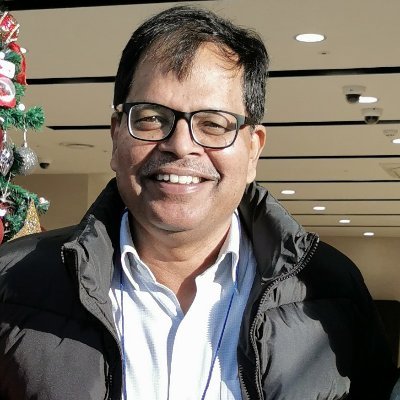Columns
Growing inequalities: A painful reality of the 21st Century
What could be more depressing than realising that irrespective of one’s ability, the outcome is still guided by gender, ethnicity, and parents' wealth?
Madhukar Upadhya
In early December, while Nepal celebrated the glory of winning the highest number of gold medals in the history of the South Asian Games, the world focused its attention and expectations on the outcome of the UN climate talks in Madrid, Spain. With particular interest from the Global South and led primarily by young people worried about their futures, the expectation was to deliver on the rules to set up a global carbon trading system, initiate discussion to pay lower-income countries for the loss and damage caused by climate change as well as a stronger commitment from the polluters to raise ambitions to cut carbon emissions. Unfortunately, despite the hope of so many, CoP25 made little to no headway in securing concrete action; the disappointment sent a chilling message to millions across the world about an increasingly uncertain future.
Meanwhile, the United Nations Development Programme published its Human Development Report (HDR) 2019, which, for the first time since the Occupy movement—initiated nearly a decade ago—globally acknowledged that today's world remains deeply unfair. These inequalities have persisted and grown, despite the remarkable progress in science and technology to reduce poverty and hunger as well as the proliferation of democracy globally. The report highlights various inequalities that are shaping the 21st century and paints a bleak picture of our present and future, as illustrated below:
‘In every country, many people have little prospect for a better future. Lacking hope, purpose or dignity, they watch from society’s sidelines as they see others pull ahead to ever greater prosperity. Worldwide many have escaped extreme poverty, but even more have neither the opportunities nor the resources to control their lives. Far too often gender, ethnicity or parents’ wealth still determines a person’s place in society.’
Nepal improving its Human Development Index ranking—147 compared to last year’s 149 rankings—may be a solace to policymakers. However, the challenges we face, which the report highlights with brutal clarity, are overwhelming. Yet, we haven’t attested to it the kind of attention it warrants. The broader problems that humanity, including Nepal, will continue to encounter are centred around today’s youth. They are educated and capable, yet stuck with no ladder of choices to succeed. Today’s youth is worried about their future and the future of their children, perhaps more than any other generation before them.
The questions they ask are grave: Will we be able to meet the rising cost of basic amenities, including food, health, and accommodation? Will we be able to live as long as our parents with the increasing costs of healthcare? What kind of life will we lead with mostly adulterated food and a polluted environment where everything, including drinking water, is controlled by market forces? What will happen to the prospects of a decent life when global temperatures increase by 2 degrees Celsius, which, according to scientists, could lead to unprecedented damage to our life-support systems? Due to the potential apocalypse they fear, some have even begun to opt-out of parenthood because they’re afraid of subjecting their children to a dystopian future, thanks to climate change, economic uncertainty, and political strife. No generation before the Millennials and Gen Z have had to contemplate such sombre prospects.
This is not to say that inequalities didn’t exist in the past. Until a few decades ago, many people were generally poor, suffered frequent food shortages, lived a shorter life, and only those with financial means could access education; gender discrimination remained rampant. Yet, a person coming from a lower-middle-class family with average income, some 40 years ago, could eventually own a house in the capital, have a car or a two-wheeler to commute, and send their children to private schools. Many high-level bureaucrats and those in power today reminisce about the hardships they faced when they began their careers and how they overcame them. But today’s youth can’t even imagine owning a house with the income they hope to make, nor can they think of saving for retirement—if they’re lucky to get a stable job in the first place. What could be more depressing than realising that irrespective of one’s ability to excel, the outcome, largely, is still guided by one’s gender, ethnicity, and parents' wealth?
Two seismic shifts, the HDR report predicts, will shape the 21st century: technological transformations and climate change. The technological advances, such as machine learning and artificial intelligence, can deepen the chasm between the poor and the rich within and even across countries. This will lead to an uncertain future for those who can’t keep pace with technological advances.
On another front, the climate crisis, which many believe is already here, is the greatest threat that humankind has ever faced. The rising average temperatures and a changing climate have already increased the ferocity and magnitude of floods, droughts, and weather-related phenomena. Sea level rise, declining water sources, and loss of biodiversity have severe consequences to the livelihood base. The fact that six out of 10 displacements from their homes that people faced in 2018 were due to natural disasters is not promising. The four-fold rise in the price of onion in South Asia in 2019 is a glaring example of how climate change can impact every household and its budget. In sum, climate change will only further intensify poverty, widen existing inequalities, and undermine social safety nets.
The realisation of what lies ahead is perhaps what prompted millions of young people, mostly children, across the globe to join Fridays for Future school strikes. The strikes hoped to put pressure on governments to immediately act and cut carbon emissions. When these young activists at CoP25 realised that their voices were not being heard, they resorted to occupying the main stage at the conference to vent their frustration. With astounding clarity, these young people further substantiated what the HDR 2019 report claimed.
An event as important as CoP25 ending indecisively while neglecting the voices of young people only goes to show the extent and scope of actions needed immediately. Similarly, the HDR 2019 report sends an early warning to policymakers on the need to tackle what lies ahead in a rapidly evolving world. Our current models and mode of operation have failed to secure a proper future for our youth. We cannot afford to fail them again by going about our business as usual.




 16.12°C Kathmandu
16.12°C Kathmandu













%20(1).jpg&w=300&height=200)

